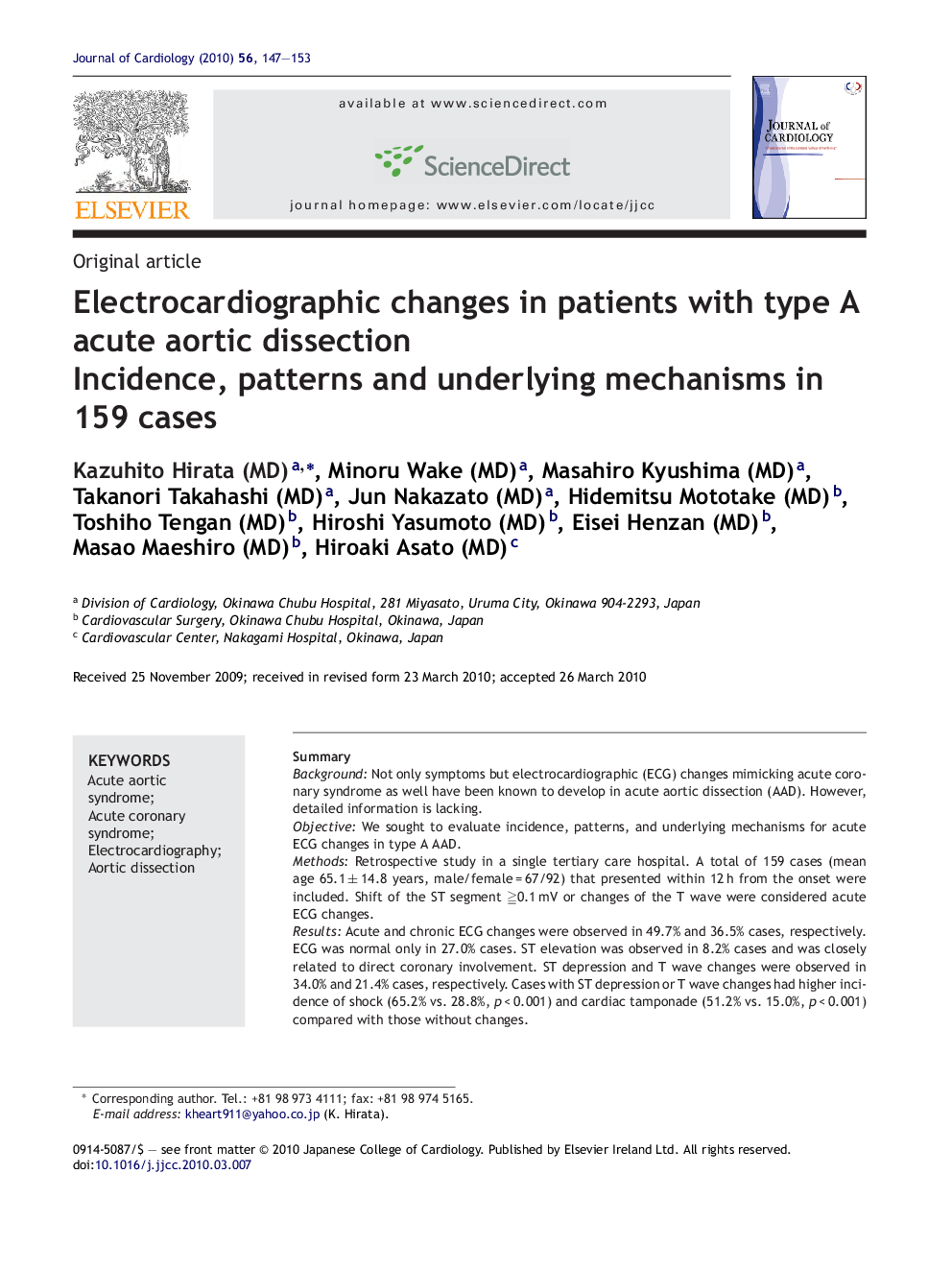| Article ID | Journal | Published Year | Pages | File Type |
|---|---|---|---|---|
| 2963428 | Journal of Cardiology | 2010 | 7 Pages |
SummaryBackgroundNot only symptoms but electrocardiographic (ECG) changes mimicking acute coronary syndrome as well have been known to develop in acute aortic dissection (AAD). However, detailed information is lacking.ObjectiveWe sought to evaluate incidence, patterns, and underlying mechanisms for acute ECG changes in type A AAD.MethodsRetrospective study in a single tertiary care hospital. A total of 159 cases (mean age 65.1 ± 14.8 years, male/female = 67/92) that presented within 12 h from the onset were included. Shift of the ST segment ≧0.1 mV or changes of the T wave were considered acute ECG changes.ResultsAcute and chronic ECG changes were observed in 49.7% and 36.5% cases, respectively. ECG was normal only in 27.0% cases. ST elevation was observed in 8.2% cases and was closely related to direct coronary involvement. ST depression and T wave changes were observed in 34.0% and 21.4% cases, respectively. Cases with ST depression or T wave changes had higher incidence of shock (65.2% vs. 28.8%, p < 0.001) and cardiac tamponade (51.2% vs. 15.0%, p < 0.001) compared with those without changes.ConclusionAcute ECG changes were common in type A AAD. Physicians taking care of patients with chest pain and acute ECG changes should consider the possibility of AAD before performing thrombolysis or percutaneous catheter intervention.
